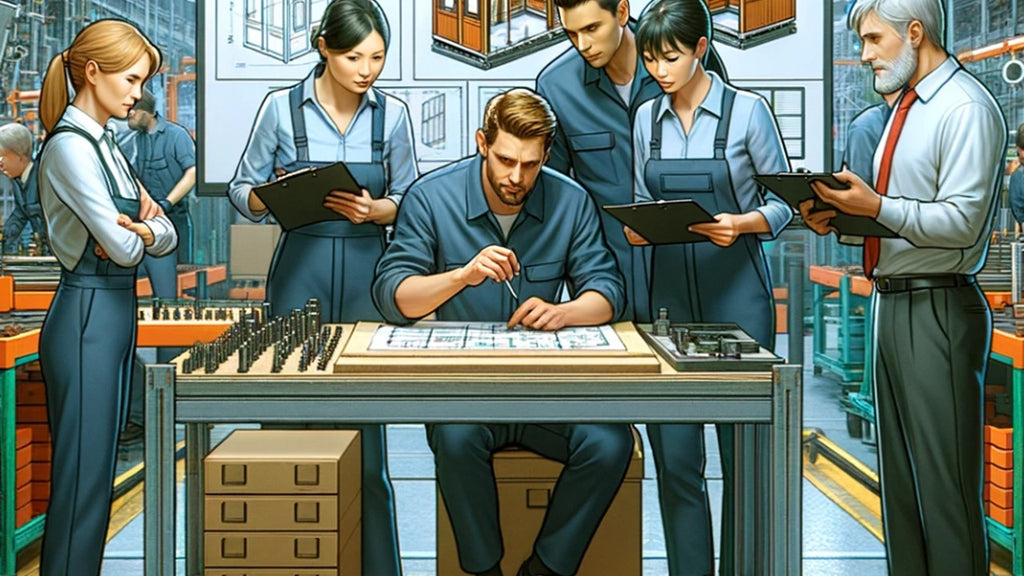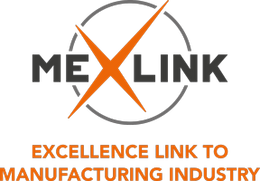KAIZEN: Small Steps, Big Results
Posted by PASI JULKUNEN

Pentti Enlund reveals the secrets of continuous improvement in our blog series: KaiZen. The first blog in the series focuses on opening up the Kaizen philosophy itself. In the following, we discuss, for example: What KAIZEN focuses on and how operations are organized, as well as KAIZEN in practice.
How to reduce costs, find the potential to eliminate CO2 and save lead time in the hectic pace of business? Often, the visible potential of productivity can be taken care of, even through automation, but then you run into an invisible wall, where productivity does not improve and hidden costs come along with the life cycle of the products.
Exploiting the unseen potential requires its own procedures, which in the context of continuous improvement is called Kaizen. In the middle of everything, people's strength and growth may be forgotten. However, Kaizen is not only about making production lines more efficient, it is much more.
The Kaizen concept has over a decade practical experience with the shop floor bluecollars in MexLink's workshops. We have achieved permanent results, where typically the invested time has brought a 3-5 times return already within the first year. The green transition has come along as a natural part with the elimination of waste, when we have reached the elimination of carbon dioxide and energy hidden in processes and products.
The word KAIZEN consists of two words joined together, KAI and ZEN.
KAI means a systematic process of improving the existing situation for the better: by breaking down the problem to be dealt with into parts, modifying and changing the situation with the principle that we do not seek perfection.
ZEN means a burning desire to develop as a person towards excellence; encouraging each employee to think independently, learning to become an even better problem solver, developing the knowledge and skills required at work, and improving the working atmosphere and morale through well-structured and managed teamwork. Figure 1.

Figure 1. KaiZe's philosophy
So how do you build such a system, which enables the use of every brain cell of the company's personnel every day, i.e. how to mobilize and bring together the brain resources of all the company's employees and at the same time enable people to develop towards excellence?
The solution is a change in the way of thinking and operating, where alongside the cost, quality and automation-oriented way of thinking, a human-centered way of thinking KAIZEN is introduced, which leads to the growth of the joy of work and ultimately the appreciation of humanity, without coercion and underestimation of people's abilities, and finally the transformation of the organization from a boss-dominated, leader-dominated to a coach-dominated organization.
The change in mindset includes, for example, the development of open relationships with both suppliers and own employees on the principle that problems are common and can be solved in a way that benefits the end user, we are all in the same boat. An important factor here is also the development of a family business-like operating method between the company's management and employees by working together to achieve common goals. Everyone's open attitude towards new ideas and change is also achieved by understanding that change is not only good but necessary. This is best achieved by creating a system where these new ideas come directly from the employees, the best experts in their process, analyzing them and accepting them.
The development of the personnel's competence in KAIZEN techniques and their application in practice requires continuous training directly at the site through a KAIZEN facilitator, i.e. a person who knows the subject, and by participating in KAIZEN projects at the floor level. KAIZEN offers a development path for the company to develop into a successful company in international competition.
" When the rate of change outside the company exceeds the rate of change inside, the company's days are numbered!"
Small improvements and innovations
There are two ways of progressing , progressing with small steps KAIZEN and progressing with big leaps in productivity, for which the expression INNOVATIONS is used.
It is amazing to see how Innovations are usually more easily accepted by company management than small improvements. They are easier to manage. Productivity, on the other hand, is a stream of small dirty details and it is difficult to grasp them. Are they even interesting in their "slight incompetence". However, both are equally important and even in their differences they shake hands with each other ( picture 2 ).
One good advantage of KAIZEN is that it does not require sophisticated techniques and technological breakthroughs. The implementation usually requires simple conventional techniques, such as the Seven Quality Tools (Pareto Chart, Cause-Effect Chart, Histogram, Control Chart, Scatter Chart, Various Graphics, Checklists). Common sense is often enough to work in a KAIZEN project.
So the big difference between KAIZEN and INNOVATION is that KAIZEN usually does not require large investments to implement, but instead requires a large amount of continuous small improvement and commitment. These two opposite concepts can be described with a staircase structure.
Innovations are supposed (figure 2 ) to bring productivity jumps at each step in the implementation sequence, and they do...at first. But the seed of disillusionment has already been sown.

Figure 2. Default Figure 3. Reality
Figure 4 shows the real situation, if only innovations are implemented to improve productivity, innovations gradually lose their effectiveness. During a product's life cycle, any new concept faces a steady stream of changes that eat away at its productivity. Maintaining productivity also requires constant maintenance.
In fact, maintenance is not enough to achieve improvement. Since there is no such thing as a static state, all systems are destined to rot after their implementation. This is why there must be continuous maintenance activities aimed at improvement, even to keep the situation constant.
Once the innovation has been accomplished, it is necessary to start a series of KAIZEN activities to maintain and improve the situation ( Figure 5) .

Figure 4. KaiZen - Innovation rotation
KAIZEN is the glue between two innovations , helping innovations to remain viable and improve their performance.
Kaizen strategists believe that standards are variable in nature. A standard leads to another new better standard as continuous improvement is made.
15/04/2024 Pentti Enlund, MexLink Oy
 English
English Finnish
Finnish Swedish
Swedish German
German

